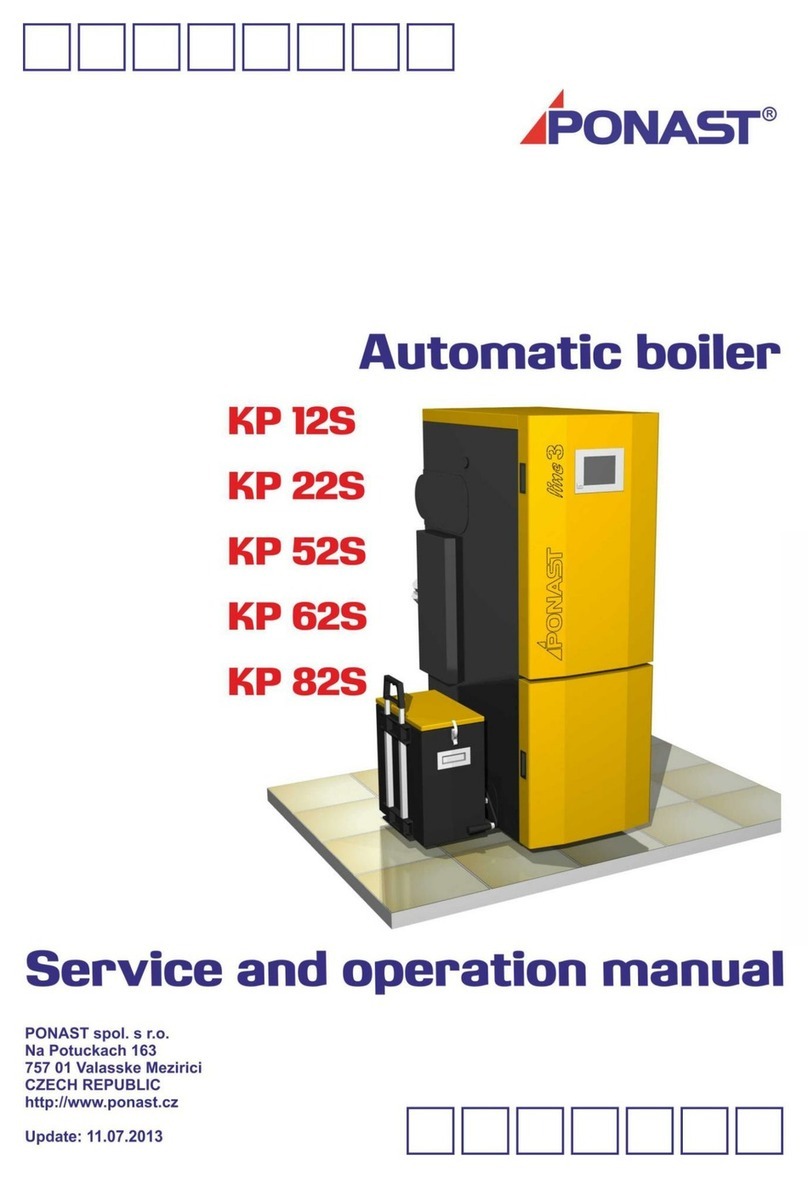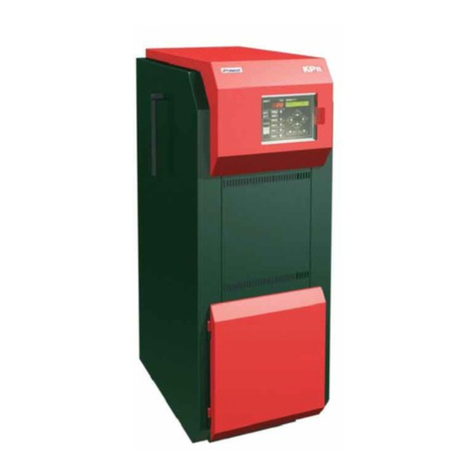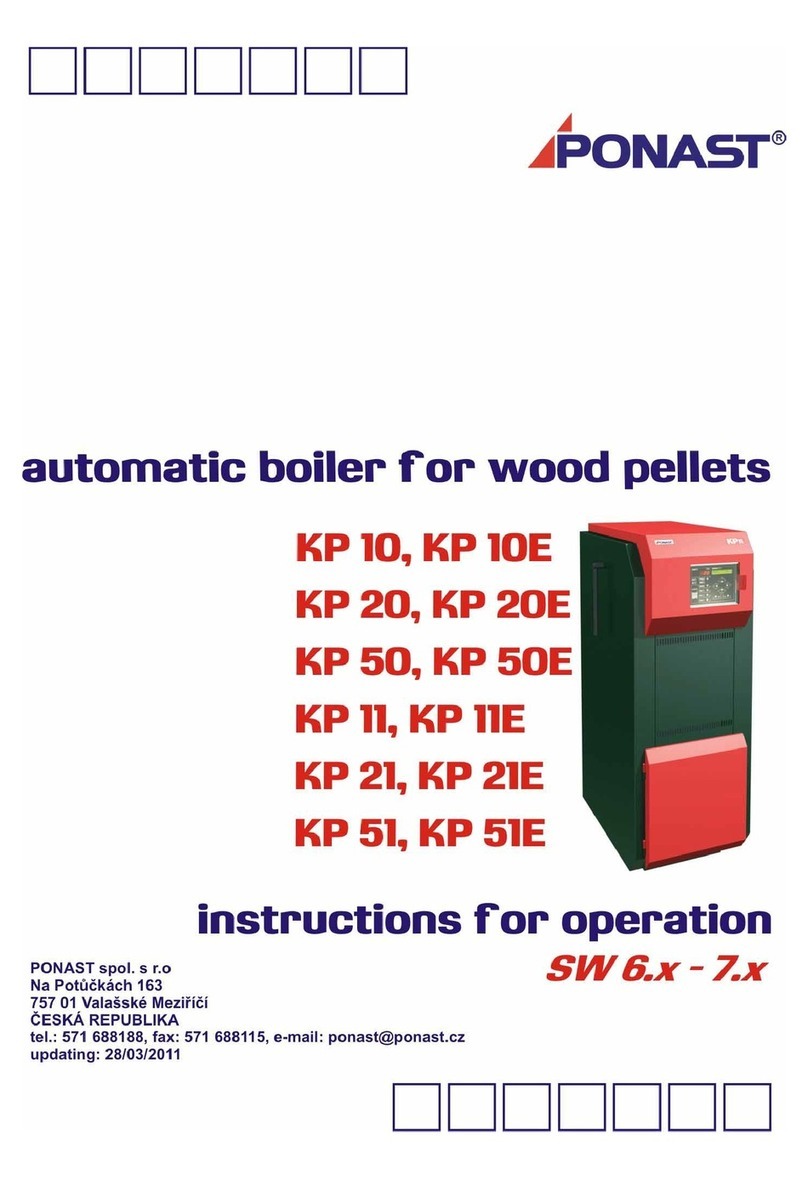Automatic boiler for wood pellets
Instructions for operation
4
CHAPTER 1. IMPORTANT NOTICES______________________________________________
This product may only be put into operation by an installation organization trained by the manufacturer.
This product may only be operated by adult persons, duly acquainted with the way the product is controlled
and duly acquainted also with these Instructions. If you adhere to the below mentioned principles, the
product will serve you reliably to your full satisfaction.
1). It is prohibited to intervene in any way in the structure or electrical installation of products. Having the equipment
been disconnected from the electric network, the power supply cord has to be plugged from the mains outlet!
2). It is prohibited to use inflammable liquids for ignition.
3). No inflammable materials may be stored on the boiler, neither may they be stored within the distance of 1,500 mm
from the boiler (except for operating stock in the metal bin).
4). In order to preserve long-term service life of the boiler body, it is not recommended to operate the boiler frequently
under the temperature of 60°C, if the boiler is not protected with a primary circuit. The temperature of 60°C should be
considered as the minimum temperature.
5). The check how the furnace is filled with fuel is only visual. Any verification with touch is prohibited as it may result in
injury.
6). If any work which generates inflammable vapours takes place in the boiler room (glueing the floor, etc.), the boiler has
to be out of operation and the fire has to be burnt out in the boiler.
7). The door of the boiler has always to be close shut. Should you perform any check, open the door carefully to prevent
from getting jeopardized by gathered products of combustion or to prevent any sparks flying out from the boiler from
being the cause of any accident. Open the door slowly in order to get the combustion chamber aerated towards the
chimney. This procedure has to be adhered to when the ash is being removed from the ash pan's space.
8). Having the heating season been finished, clean the boiler thoroughly as per the chapter 7 - Maintenance. Products of
combustion stuck to the walls of the exchanger may act corrosively for the whole period of time when the boiler will be
out of operation. If the burner is not cleaned, this may have effect on faulty combustion. We recommend to hire a
specialized company to perform this work.
9). If you work on or near to the mechanically movable parts (fuel feeder, etc.), ensure safe disconnection of the
equipment from electric voltage. There is a risk of injury.
10). You should always operate the boiler only under parameters and in harmony with recommendations given in these
Instructions for installation and operation. If the boiler works in the AUTO mode and if there is a failure of current, the
boiler will start operation again with the electric firing programme (if this programme has been installed) after the delivery
of electric current is restored.
11). The manufacturer does not assume any liability for errors and subsequent damage caused by unskilled operation of
the equipment or by infringement of principles given in these Instructions for installation and operation or by
infringement of generally binding standards and regulations or by using inadequate fuel.
12). If the boiler is moved or otherwise handled with, safety regulations which apply to handling with heavy loads have to
be adhered to.
13). It is prohibited to place heavy loads on jacketed boiler and to step on it. It is recommended to
remove the protective transport after all the building and installation work has been completely
finished.






























